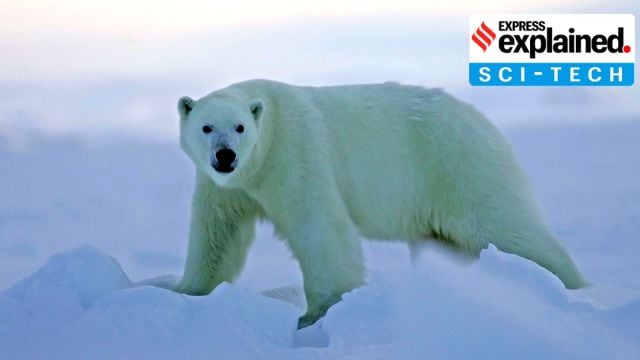In studying polar bear fur, possible solution to ‘forever chemicals’ in environment
The findings of a new study could help design naturally-sourced coatings that could reduce current dependence on PFAs. Here is why this matters.
 The findings could help design naturally-sourced coatings that could reduce current dependence on PFAs. (NYT Photo)
The findings could help design naturally-sourced coatings that could reduce current dependence on PFAs. (NYT Photo)A new study revealed that the fur of polar bears contains an oily substance that helps them remain dry despite the creatures sliding on ice and diving into the water to hunt. This finding could potentially help develop an alternative to replace Per- and polyfluoroalkyl substances or PFAs, also called “forever chemicals”.
The study, titled ‘Anti-icing properties of polar bear fur’, was published in the journal Science Advances on Wednesday (January 29). Researchers tested the resistance of animal fur to ice using samples of polar bear fur from Svalbard in Norway and compared them with human hair. They washed half the fur samples and hair to clean them of sebum, an oily substance secreted by skin glands connected to hair follicles in mammals.
Upon testing the unwashed samples against ice, they were found to contain sebum comparable to fluorinated ski skins. These materials are used in skis to grip them on ice and help them glide. However, fluorinated skins contain PFAs. Though extensively used in making nonstick cookware, water-repellent clothing and grease-resistant products, these chemicals do not break down and can remain in the environment for prolonged periods. PFA exposure has also been linked to decreased fertility and developmental effects in children.
Analysing the properties of fur sebum revealed that it lacks squalene, a substance that is predominant in human sebum. The fur sebum also contains cholesterol and other fatty acids. “These could be unique to polar bears, but we can’t be sure of that, as so few studies have looked at the composition of animal sebum,” Bodil Holst, a physicist at the University of Bergen in Norway and co-author of the study told the New Scientist magazine.
The findings could help design naturally-sourced coatings that could reduce current dependence on PFAs. “If we do it in the right way, we have a chance of making them environmentally friendly,” Holst told The Washington Post.
- 01
- 02
- 03
- 04
- 05





































